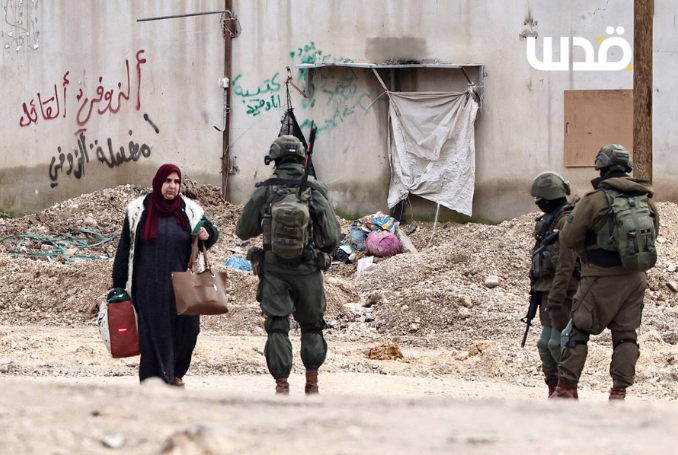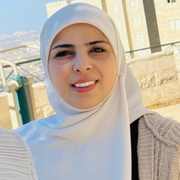
Israel’s ongoing military invasions in the West Bank’s refugee camps have displaced thousands, leaving them in dire conditions amid a harsh winter.
Adel Salim was forced to leave his home in the Jenin refugee camp with his family of eight in the early days of the Israeli invasion, which has now continued for more than 20 days.
This painful displacement has affected more than 90% of the camp’s residents, according to official Palestinian sources, leaving the displaced to endure dire humanitarian conditions.
The ongoing Israeli aggression in the northern West Bank camps follows official Israeli statements about allegedly targeting resistance strongholds and tightening security control.
However, Palestinians believe the true aim is to forcibly displace them and accelerate the annexation of the West Bank.
Harsh Winter, Dire Conditions
Since being displaced by the brutal Israeli military incursion, Salim has struggled to protect his family, which includes six children. Like thousands of others, they face extreme hardship.
He told the Palestine Chronicle that out of 17,000 displaced people, 15,000 continue to suffer from a severe lack of basic services, including heating, as they endure a bitter cold wave sweeping through the region.
“The displaced left their homes without taking anything because of the military presence in the camp and immediate evacuation orders,” he said. “They lack even the most basic necessities, especially the children.”
Buying the West Bank: Israel’s New Annexation Method ‘Catastrophic’
Emergency committees have been formed to provide aid, but the need far exceeds the available resources. More than 3,300 families are suffering from an acute shortage of water, electricity, heating, blankets, and food.
Beyond these shortages, the displaced residents of Jenin camp live in constant fear, as bombings and demolitions continue.
“We hear explosions and see smoke rising from burning houses, but we don’t know which homes have been destroyed,” Salim told us. “This uncertainty fills us with extreme anxiety.”
His own home was ransacked and vandalized, with doors blown off, windows shattered, and the water well next to it destroyed—similar to what has happened to hundreds of homes across the camp.
A Recurring Tragedy
The Tulkarm refugee camp became the next target of the Israeli army, which stormed the area over three weeks ago, forcing more than two-thirds of the population to flee.
Sondos Ali, a resident of the camp, described how Israeli soldiers imposed unbearable conditions, leading to the displacement of 85% of the population—about 10,000 people—for the first time since their families sought refuge there after the Nakba of 1948.
Following a similar pattern, Israeli forces vandalized streets and infrastructure, cut off water and electricity, and demolished or burned dozens of homes under the pretext of searching for resistance fighters.
“The displacement was forced at gunpoint during an incursion like nothing we’ve witnessed before,” Ali told us. “Since the invasion began, five Palestinians have been killed. They were buried without any public funerals or gatherings, under strict restrictions imposed by the Israeli army.”
898 Military Checkpoints: The Human Cost of Israel’s ‘Complete Domination’ of the West Bank
During the raid, entire families were detained inside their homes, which were turned into military outposts for several days. Communication and essential services were cut off, leaving residents to endure terrifying conditions.
The Israeli army recently announced that it is expanding its offensive to include the Nour Shams camp, adjacent to Tulkarm. Within hours of the assault, Israeli soldiers killed a pregnant woman and her unborn child while critically injuring her husband as they attempted to flee.
In another deadly attack, soldiers shot and killed a girl and wounded her father after blowing up the door of their home in Nur Shams refugee camp. Meanwhile, the siege of Tulkarm’s main government hospital has now lasted more than two weeks.
Tightening the Siege
The Al-Fara’a refugee camp, located in the city of Tubas, has also been under a large-scale Israeli incursion for more than ten days, with soldiers raiding homes, vandalizing property, carrying out mass arrests, and conducting field interrogations.
Omar Mansour, an activist from the camp, told us that at least 30% of residents have been forced to leave under Israeli threats.
“They were driven out at gunpoint, in a deliberate effort to intimidate them,” he said.
‘Jenin is Gaza’: Refugees Describe Israel’s Brutal Assault on Their West Bank Camp
“The camp is under complete siege. Soldiers are blocking the entry of aid, medical personnel, civil defense teams, and even journalists,” Mansour added. “A girl died ten days ago, and her body is still in refrigeration because the army is preventing her burial.”
The destruction of water pipelines, a severe shortage of food and baby formula, and the ongoing military raids have made life nearly unbearable for those who remain.
Israeli occupation soldiers continue to destroy homes and vehicles, arrest dozens, and subject others to degrading field interrogations in freezing conditions.
Despite Israel’s stated justifications for its assault, Palestinians accuse it of replicating the tactics of genocide seen in Gaza—using the same methods of displacement, terror, and the systematic cutting off of essential services.
(The Palestine Chronicle)

– Fayha’ Shalash is a Ramallah-based Palestinian journalist. She graduated from Birzeit University in 2008 and she has been working as a reporter and broadcaster ever since. Her articles appeared in several online publications. She contributed this article to The Palestine Chronicle.